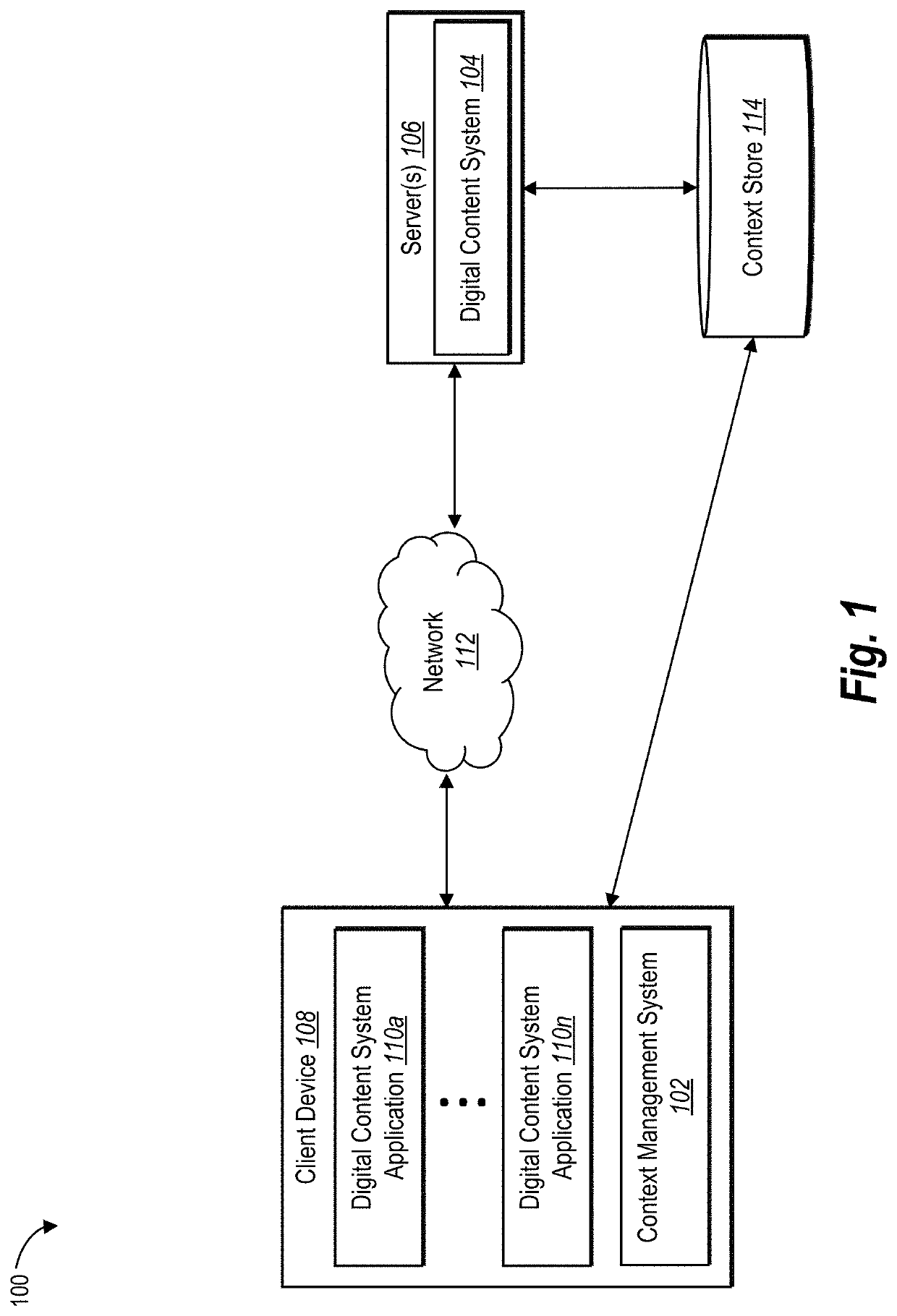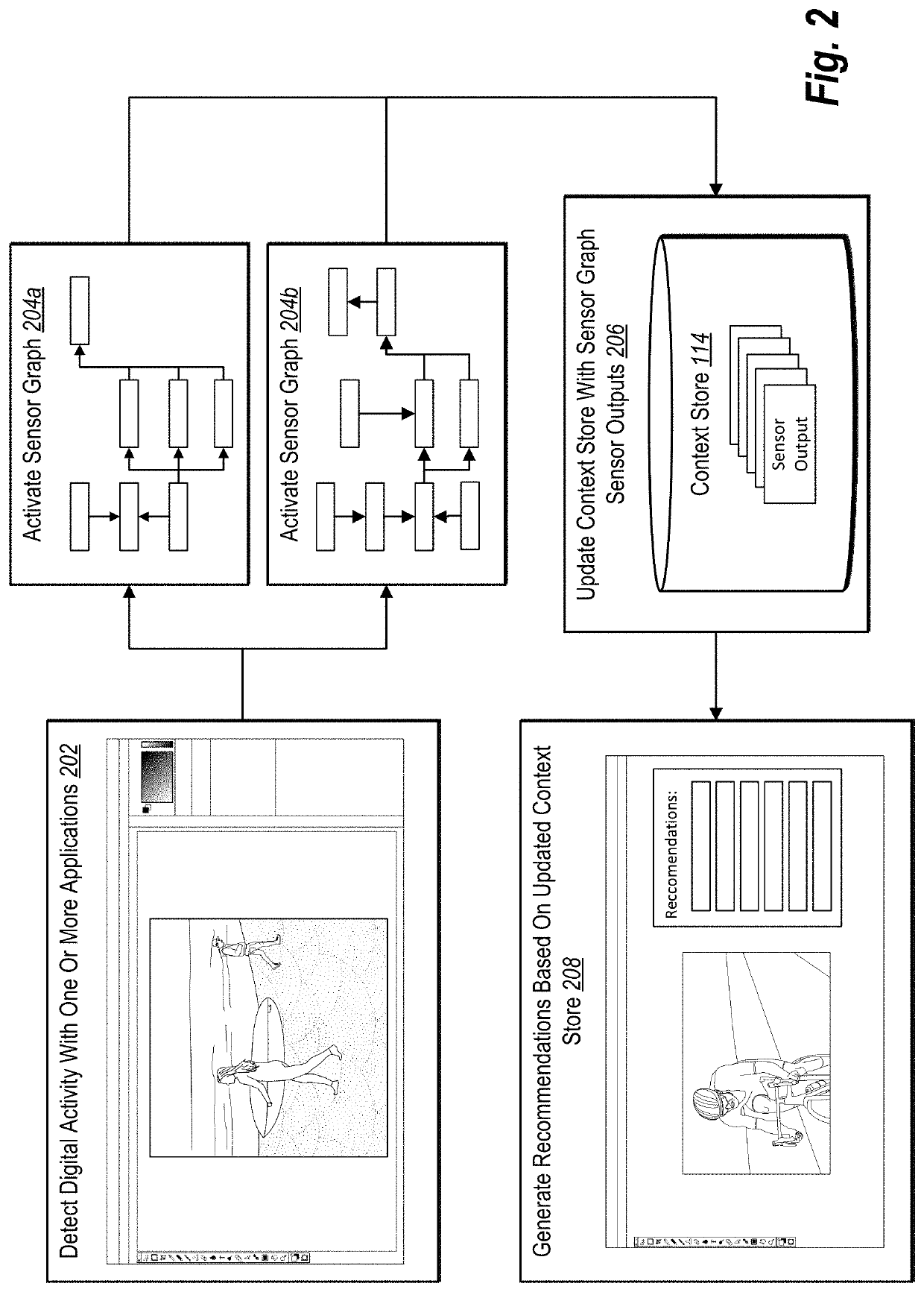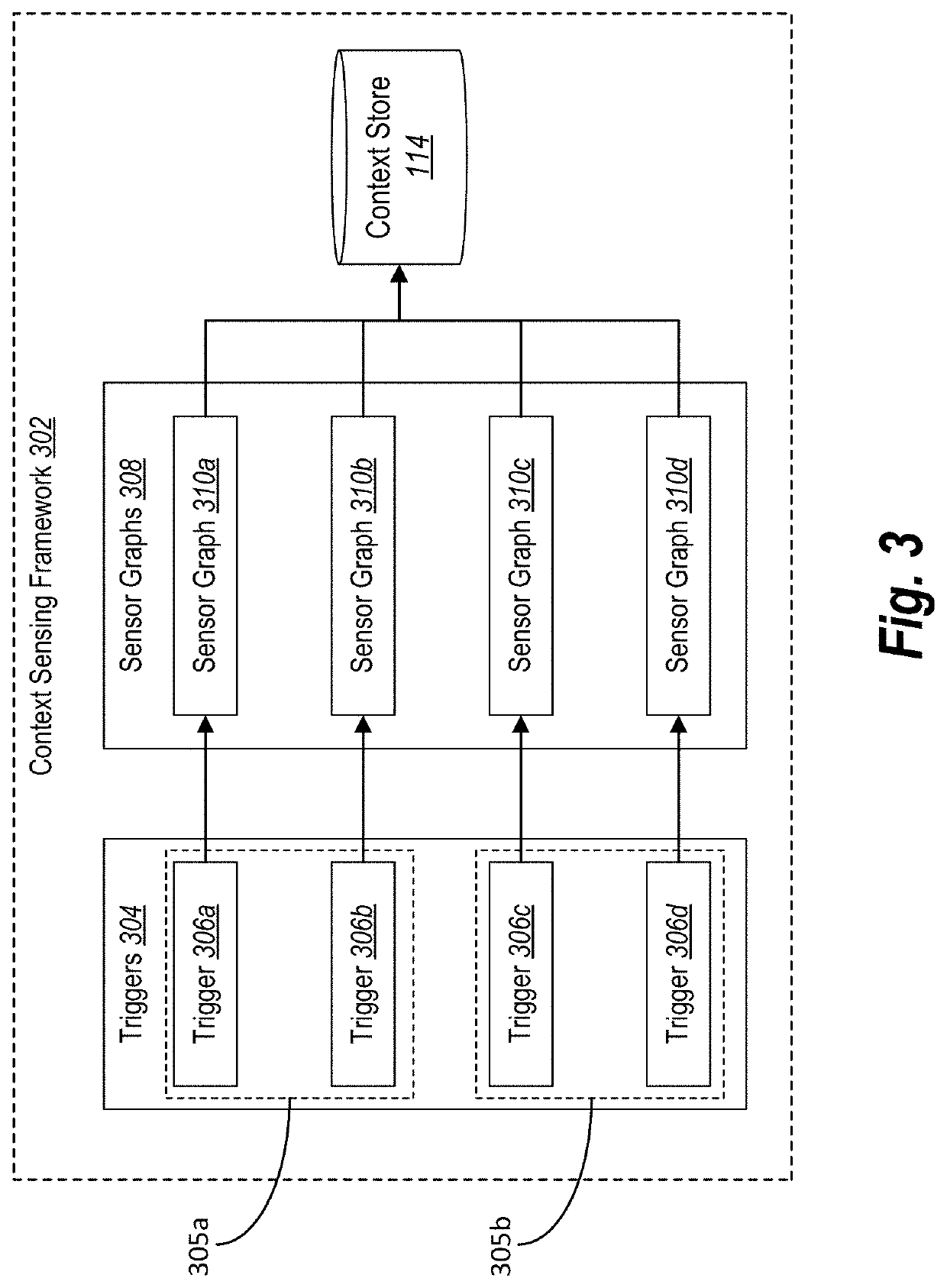Intelligently sensing digital user context to generate recommendations across client device applications
a technology of intelligent sensing and user context, applied in the execution of user interfaces, instruments, computing models, etc., can solve problems such as a number of technical problems in conventional systems
- Summary
- Abstract
- Description
- Claims
- Application Information
AI Technical Summary
Benefits of technology
Problems solved by technology
Method used
Image
Examples
Embodiment Construction
[0019]This disclosure describes one or more embodiments of a context management system that utilizes intelligently triggered sensor graphs of inter-dependent sensors to build a store of contextual data and that can then be utilized to generate digital recommendations (e.g., targeted, context-specific experiences) across client applications. In one or more embodiments, the sensor graphs include architectures of sensors organized according to one or more dependency constraints. For example, in response to a detected digital activity-based trigger associated with a sensor graph, the context management system sequentially activates sensors in the sensor graph based on one or more dependency constraints connecting the sensors. In at least one embodiment, the context management system further activates the sensors based on other constraints associated with timing and previously generated context values. As a result of the sequential and constrained activation of the sensors of a sensor gr...
PUM
 Login to View More
Login to View More Abstract
Description
Claims
Application Information
 Login to View More
Login to View More - R&D
- Intellectual Property
- Life Sciences
- Materials
- Tech Scout
- Unparalleled Data Quality
- Higher Quality Content
- 60% Fewer Hallucinations
Browse by: Latest US Patents, China's latest patents, Technical Efficacy Thesaurus, Application Domain, Technology Topic, Popular Technical Reports.
© 2025 PatSnap. All rights reserved.Legal|Privacy policy|Modern Slavery Act Transparency Statement|Sitemap|About US| Contact US: help@patsnap.com



